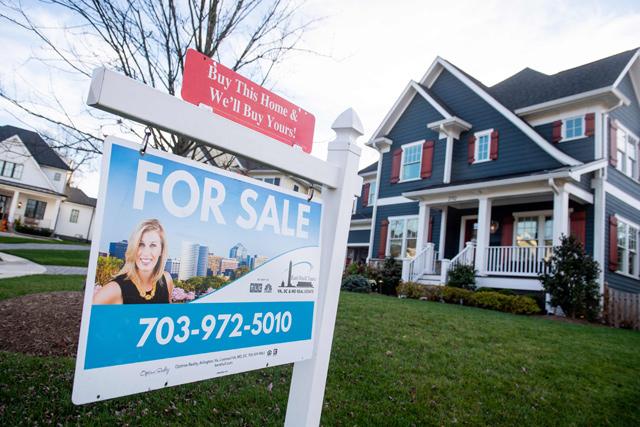Rising prices cannot stop US real estate boom

AFP
WASHINGTON — Mortgage rates are finally ticking up in the United States, one year after the Federal Reserve cut its lending rate, a step taken to boost the economy as the COVID-19 pandemic arrived, but that is not expected to cool the hot housing market.
While the wider US economy has struggled after states restricted business to stop COVID-19, real estate was one of the few bright spots in 2020, boosted both by low mortgage rates and the shift towards remote work caused by the pandemic.
"We've seen mortgage rates move higher in the past month or so," Joel Kan of the Mortgage Bankers Association indicated.
The housing market is a key part of the world's largest economy, and mortgage rates are closely watched to gauge the ease with which Americans can buy property.
They are tied into the wider US Treasury bond market, where yields have been rising in recent weeks as traders fear that the economy's improving health could bring inflation with it.
Rates on 30-year mortgages are now ticking up and expected to hit 3.5 per cent by the end of the year, after dropping in July below three per cent, a low not reached before.
"In that sense, it is bad news for buyers, because now they are facing higher interest rates, higher monthly payments," said Lawrence Yun, chief economist at the National Association of Realtors.
'Incredibly low' rates
Mortgage rates have hovered around four per cent for the past decade, but US homebuyers have seen much higher borrowing costs in the past.
Rates were around eight per cent in the early 2000s, and hit their record high of more than 18 per cent in the early 1980s, according to government-sponsored lender Freddie Mac.
Despite the recent uptick in rates, Yun says they remain "incredibly low," and predicts better economic growth that puts more money into Americans' pockets will help them overcome the increased borrowing costs and push real estate sales up 15 per cent this year.
Even with the expectation that offices will reopen as COVID-19 vaccinations become widespread, some employees could continue working remotely and look for new houses that accommodate that — a dynamic viewed as already boosting sales last year.
Kan said the market is "still looking pretty strong", and noted mortgage costs are only once component of the decisions that go into home buying, along with finding a property the buyer likes.
Supply squeeze
Yet, as more buyers have closed on homes across the United States, supply has grown short, pushing prices up and sending developers scrambling.
Sales of existing homes were up 5.6 per cent last year from 2019, their highest level since the booming housing market of 2006, just before the housing bubble burst and 2008-2010 global financial crisis began.
New homes have also seen brisk sales, pushing prices up from an average of $384,000 in January 2020 to $408,800 in January of this year, a gain of 6.5 per cent, according to the Commerce Department.
Rubeela Farooqi of High Frequency Economics predicted "record-low inventories are likely to support to building activity, especially in the single-family sector."
However, Chuck Fowke, president of the National Association of Home Builders, warned that increases in both interest rates and costs of lumber and other materials have already caused builders to slow some construction of single-family homes.
Latest News
 Safadi, Iranian counterpart discuss war on Gaza, regional escalation
Safadi, Iranian counterpart discuss war on Gaza, regional escalation US vetoes Security Council resolution on full Palestinian UN membership
US vetoes Security Council resolution on full Palestinian UN membership King, Bahrain monarch stress need to maintain Arab coordination
King, Bahrain monarch stress need to maintain Arab coordination Security Council to vote Thursday on Palestinian state UN membership
Security Council to vote Thursday on Palestinian state UN membership Dubai reels from floods chaos after record rains
Dubai reels from floods chaos after record rains
Most Read Articles
- Jordan urges UN to recognise Palestine as state
- Senate president, British ambassador discuss strategic partnership, regional stability
- Temperatures to near 40 degree mark next week in Jordan
- JAF carries out seven more airdrops of aid into Gaza
- Safadi, Iranian counterpart discuss war on Gaza, regional escalation
- UN chief warns Mideast on brink of ‘full-scale regional conflict’
- US vetoes Security Council resolution on full Palestinian UN membership
- Google fires 28 employees for protesting $1.2 billion cloud deal with “Israeli” army
- Biden urges Congress to pass 'pivotal' Ukraine, Israel war aid
- Israeli Occupation strike inside Iran responds to Tehran's provocation, reports say